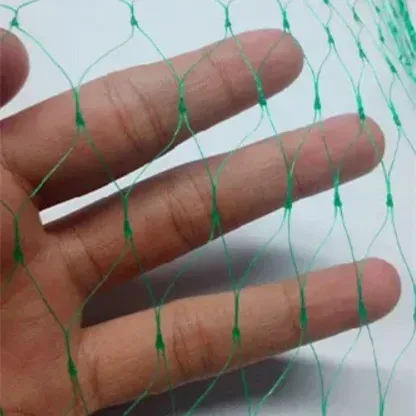-
 Afrikaans
Afrikaans -
 Albanian
Albanian -
 Amharic
Amharic -
 Arabic
Arabic -
 Armenian
Armenian -
 Azerbaijani
Azerbaijani -
 Basque
Basque -
 Belarusian
Belarusian -
 Bengali
Bengali -
 Bosnian
Bosnian -
 Bulgarian
Bulgarian -
 Catalan
Catalan -
 Cebuano
Cebuano -
 China
China -
 Corsican
Corsican -
 Croatian
Croatian -
 Czech
Czech -
 Danish
Danish -
 Dutch
Dutch -
 English
English -
 Esperanto
Esperanto -
 Estonian
Estonian -
 Finnish
Finnish -
 French
French -
 Frisian
Frisian -
 Galician
Galician -
 Georgian
Georgian -
 German
German -
 Greek
Greek -
 Gujarati
Gujarati -
 Haitian Creole
Haitian Creole -
 hausa
hausa -
 hawaiian
hawaiian -
 Hebrew
Hebrew -
 Hindi
Hindi -
 Miao
Miao -
 Hungarian
Hungarian -
 Icelandic
Icelandic -
 igbo
igbo -
 Indonesian
Indonesian -
 irish
irish -
 Italian
Italian -
 Japanese
Japanese -
 Javanese
Javanese -
 Kannada
Kannada -
 kazakh
kazakh -
 Khmer
Khmer -
 Rwandese
Rwandese -
 Korean
Korean -
 Kurdish
Kurdish -
 Kyrgyz
Kyrgyz -
 Lao
Lao -
 Latin
Latin -
 Latvian
Latvian -
 Lithuanian
Lithuanian -
 Luxembourgish
Luxembourgish -
 Macedonian
Macedonian -
 Malgashi
Malgashi -
 Malay
Malay -
 Malayalam
Malayalam -
 Maltese
Maltese -
 Maori
Maori -
 Marathi
Marathi -
 Mongolian
Mongolian -
 Myanmar
Myanmar -
 Nepali
Nepali -
 Norwegian
Norwegian -
 Norwegian
Norwegian -
 Occitan
Occitan -
 Pashto
Pashto -
 Persian
Persian -
 Polish
Polish -
 Portuguese
Portuguese -
 Punjabi
Punjabi -
 Romanian
Romanian -
 Russian
Russian -
 Samoan
Samoan -
 Scottish Gaelic
Scottish Gaelic -
 Serbian
Serbian -
 Sesotho
Sesotho -
 Shona
Shona -
 Sindhi
Sindhi -
 Sinhala
Sinhala -
 Slovak
Slovak -
 Slovenian
Slovenian -
 Somali
Somali -
 Spanish
Spanish -
 Sundanese
Sundanese -
 Swahili
Swahili -
 Swedish
Swedish -
 Tagalog
Tagalog -
 Tajik
Tajik -
 Tamil
Tamil -
 Tatar
Tatar -
 Telugu
Telugu -
 Thai
Thai -
 Turkish
Turkish -
 Turkmen
Turkmen -
 Ukrainian
Ukrainian -
 Urdu
Urdu -
 Uighur
Uighur -
 Uzbek
Uzbek -
 Vietnamese
Vietnamese -
 Welsh
Welsh -
 Bantu
Bantu -
 Yiddish
Yiddish -
 Yoruba
Yoruba -
 Zulu
Zulu
clear bird netting
A Comprehensive Overview of Clear Bird Netting Benefits and Applications
In recent years, the need for effective wildlife management and protection of agricultural crops has led to increased interest in innovative solutions such as clear bird netting. This versatile and effective tool addresses the challenges posed by bird-related damage in various settings, ensuring agricultural productivity while also considering environmental aspects.
Understanding Clear Bird Netting
Clear bird netting is a lightweight, durable mesh that is designed to prevent birds from accessing certain areas without obstructing light and airflow. Made from high-quality materials such as polyethylene, this netting is resistant to UV rays and extreme weather conditions, making it suitable for long-term use in diverse environments. The clarity of the net allows for sunlight to penetrate, which is crucial for plant health, and it does not disrupt aesthetic views when used in gardens or around structures.
The Benefits of Clear Bird Netting
1. Crop Protection One of the primary advantages of clear bird netting is its ability to safeguard crops. Birds can pose a significant threat to fruits, vegetables, and grains, leading to substantial financial losses for farmers and gardeners. By installing bird netting over crops, producers can significantly reduce the risk of bird damage, thus protecting their investment and ensuring a healthy yield.
2. Biodiversity Conservation While it effectively keeps certain bird species away from crops, clear bird netting can also play a role in preserving local ecosystems. By reducing bird access to crops, it allows farmers to minimize the use of pesticides and other harmful chemicals that can impact non-target species. This approach promotes a more balanced ecosystem, benefiting both agriculture and wildlife.
3. Easy Installation and Maintenance Clear bird netting is designed for ease of use. It can be installed quickly and efficiently, requiring minimal tools or professional assistance. The lightweight nature of the material allows for easy handling, while its durability means that it can last for several seasons with proper care.
clear bird netting

4. Versatility Beyond agriculture, clear bird netting can be applied in a variety of contexts. It is commonly used in residential gardens to protect ornamental plants and fruit trees. It also proves beneficial in urban settings, where building owners may wish to deter birds from nesting on rooftops or balconies. Additionally, netting can be employed in commercial settings, such as vineyards or orchards, to minimize the impact of birds on the harvest.
5. Aesthetic Appeal Unlike traditional bird deterrents, which can be visually disruptive, clear bird netting is discreet. It blends seamlessly into the environment, allowing property owners to maintain the beauty of their landscapes while achieving functional benefits. This aesthetic quality makes it an attractive option for residential and commercial properties alike.
Challenges and Considerations
Despite its many advantages, there are some challenges associated with clear bird netting. Proper installation is crucial to prevent entanglement and to ensure that birds cannot find gaps in the netting. Additionally, maintenance is necessary to keep the netting clean and free from debris, which can impede its effectiveness.
Another consideration is the potential impact on non-target bird species. While the netting is designed to exclude certain birds, care should be taken to minimize risks to beneficial species. Educating users about proper installation techniques and informing them about the types of birds that may be affected is essential for responsible use.
Conclusion
Clear bird netting offers a practical, efficient, and environmentally friendly solution for managing bird-related challenges in agriculture and beyond. By providing effective crop protection while promoting biodiversity and aesthetic appeal, it serves as a valuable tool for farmers, gardeners, and property owners. As awareness of sustainable agriculture practices continues to grow, clear bird netting is poised to play an increasingly important role in balancing productivity with ecological responsibility.
-
Shipping Plastic Bags for Every NeedNewsJul.24,2025
-
Safety Netting: Your Shield in ConstructionNewsJul.24,2025
-
Plastic Mesh Netting for Everyday UseNewsJul.24,2025
-
Nylon Netting for Every UseNewsJul.24,2025
-
Mesh Breeder Box for Fish TanksNewsJul.24,2025
-
Expanded Steel Mesh Offers Durable VersatilityNewsJul.24,2025











